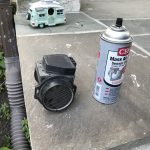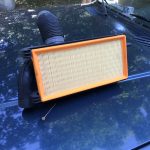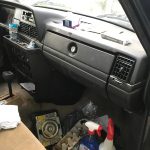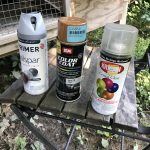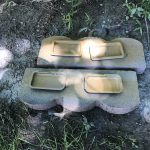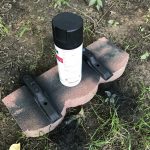Being a 26 year old car that has obviously been driven pretty much every day of all those years, It’s not surprising that my 240’s engine bay (and the engine itself) is as dirty as flip. A picture is worth 1000 words, so I’ll just show the “before” photos:

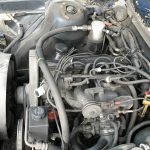

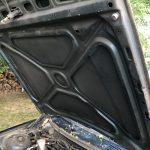
As can be seen, the entire bay had a coating of greasy grime, the accumulated grit and oil of give or take 150k miles of chugging along. This was going to take a whole lot of soapy water and rags to get up. Not pictured are the battery and tray, the wiper fluid reservoir, and radiator coolant expansion tank. This was to allow more access the the bottom of the bay. They will be cleaned separately. There was also a significant number of small rust spots where paint had chipped off. I could clean these up, but I’m not entirely sure what I should do to prevent the rust from spreading, at least in the short term. I might end up getting some touch up paint to cover these spots until the day when I repaint the entire bay.
Next To Godliness
After going to town on the parts I could reach I decided the fan shroud, radiator hoses, radiator should come out too. This allowed me a much greater amount of access to the bottom of the bay. Now I was able to clean a lot more of the gunk from the bottom parts of the engine. The underside of the hood was super dirty to the point that as I wiped that dirt off the paint was coming off with it, and that was with only soapy water! I’m not too worried about how this looks as it’ll mostly be covered by the heat shield/sound reducer that I will eventually get to replace the missing one, so it may get some touch up using the color matched paint mentioned before or even just flat black Rust-Oleum.
So after a day of effort this is what I have now.
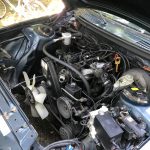
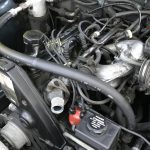

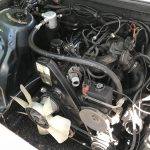
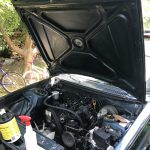
Definitely cleaner, but there is still a bunch left to do. I have to reassemble the radiator and the filter box and preheat hose. Interestingly I saw this post on the MVS forum about just taking the preheat thermostat out completely. He makes a compelling argument about it being just there to deliver as much air as possible to the engine, so perhaps I’ll take that advice in the future. Until then there will be some more cleaning and a reassembly to the original state. Look for that in the coming days when I 1) have more time and 2) the darn heat doesn’t make being outside for more than a few minutes utterly unbearable.
